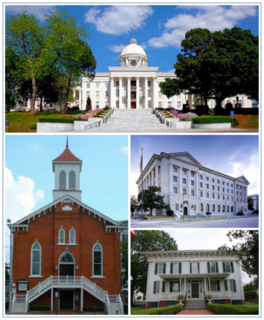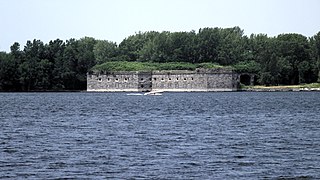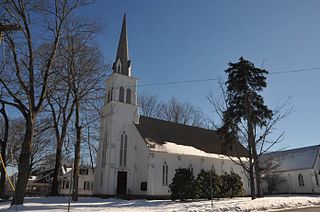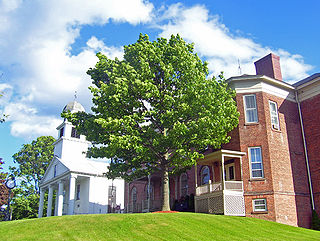
The Civil Works Administration (CWA) was a short-lived job creation program established by the New Deal during the Great Depression in the United States to rapidly create mostly manual-labor jobs for millions of unemployed workers. The jobs were merely temporary, for the duration of the hard winter of 1933–34. President Franklin D. Roosevelt unveiled the CWA on November 8, 1933, and put Harry L. Hopkins in charge of the short-term agency.

Montgomery is the capital city of the U.S. state of Alabama and the county seat of Montgomery County. Named for Richard Montgomery, it stands beside the Alabama River, on the coastal Plain of the Gulf of Mexico. In the 2010 Census, Montgomery's population was 205,764. It is the second most populous city in Alabama, after Birmingham, and is the 118th most populous in the United States. The Montgomery Metropolitan Statistical Area's population in 2010 was estimated at 374,536; it is the fourth largest in the state and 136th among United States metropolitan areas.

Montgomery is a village in Kane and Kendall counties, Illinois, as well as a Chicago suburb. The population was 18,438 at the 2010 census, up from 5,471 at the 2000 census. As of 2017 the estimated population was 19,701. Between 2000 and 2010 the village population grew 237 percent, making Montgomery the ninth fastest growing municipality in Illinois during the decade.

Odessa is a village in Schuyler County, New York, United States.

Norwood is the second most populous city in Hamilton County, Ohio, United States, and an enclave of the larger city of Cincinnati. The population was 19,207 at the 2010 census. Originally settled as an early suburb of Cincinnati in the wooded countryside north of the city, the area is characterized by older homes and tree-lined streets.

Norristown is a borough in and the county seat of Montgomery County, Pennsylvania, United States. Located along the Schuylkill River approximately six miles from the Philadelphia city limits, Norristown has a population of 34,324 as of the 2010 U.S. Census. It is the fourth most populous municipality in the county and second most populous borough in Pennsylvania.

Rhinebeck is a village in the town of Rhinebeck in Dutchess County, New York, United States. The population was 2,657 at the 2010 census. It is part of the Poughkeepsie–Newburgh–Middletown, NY Metropolitan Statistical Area as well as the larger New York–Newark–Bridgeport, NY-NJ-CT-PA Combined Statistical Area.

Skelmorlie is a village in North Ayrshire, Scotland. Although it is the northernmost settlement in the council area of North Ayrshire it is contiguous with Wemyss Bay, which is in Inverclyde. The dividing line is the Kelly Burn, which flows into the Firth of Clyde just south of the Rothesay ferry terminal. Despite their proximity, the two villages have historically been divided, Skelmorlie in Ayrshire and Wemyss Bay in Renfrewshire.

New Lanark is a village on the River Clyde, approximately 1.4 miles from Lanark, in Lanarkshire, and some 25 miles (40 km) southeast of Glasgow, Scotland. It was founded in 1786 by David Dale, who built cotton mills and housing for the mill workers. Dale built the mills there in a brief partnership with the English inventor and entrepreneur Richard Arkwright to take advantage of the water power provided by the only waterfalls on the River Clyde. Under the ownership of a partnership that included Dale's son-in-law, Robert Owen, a Welsh philanthropist and social reformer, New Lanark became a successful business and an early example of a planned settlement and so an important milestone in the historical development of urban planning.

Swansea is a neighbourhood in the city of Toronto, Ontario, Canada, bounded on the west by the Humber River, on the north by Bloor Street, on the east by High Park and on the south by Lake Ontario. The neighbourhood was originally a separate municipality, the Village of Swansea, which was annexed by the City of Toronto in 1967.

Bonnington is a district of Edinburgh, the capital of Scotland. The area centres upon an original village which grew up around a ford on the Water of Leith on the old boundary between Edinburgh and the port of Leith. Before the creation of Leith Walk the road via the villages of Broughton and Bonnington, or Wester Road as it appears on some old maps, was one of two roads formerly connecting Edinburgh to Leith; the other being Easter Road. The district lies between the districts of Pilrig and Newhaven.

Farmar Mill is a historic mill building. The mill was powered by the Wissahickon Creek and is located on Mather's Lane near Skippack Pike, and just west of the historic Bethlehem Pike in the village of Whitemarsh, Pennsylvania, in the United States.
West Aurora Public School District 129 is a unit school district in southeastern Kane County, Illinois. The present "West Side" school district covers the city of Aurora, Illinois with an eastern boundary of the Fox River, a southern boundary of the Kane County and Kendall County line, a western boundary of Aurora's city limits, and a northern boundary of the village limits of North Aurora, Illinois. Students from Aurora, North Aurora, Montgomery, Illinois and Sugar Grove, Illinois attend West Aurora schools.

Fort Montgomery on Lake Champlain is the second of two American forts built at the northernmost point of the American part of the lake: a first, unnamed fort built on the same site in 1816 and Fort Montgomery built in 1844.

Little Falls Branch, a 3.8-mile-long (6.1 km) tributary stream of the Potomac River, is located in Montgomery County, Maryland. In the 19th century, the stream was also called Powder Mill Branch. It drains portions of Bethesda, Somerset, Friendship Heights, and the District of Columbia, flows under the Chesapeake and Ohio Canal (C&O), and empties into the Potomac at Little Falls rapids, which marks the upper end of the tidal Potomac.

Wesley is an unincorporated community in Wayne Township, Montgomery County, in the U.S. state of Indiana.

Woodside is a neighborhood located in the Montgomery County, Maryland, area of Silver Spring. Founded in 1889, it is the oldest neighborhood in Silver Spring.

The Murphy House is a historic Greek Revival style house in Montgomery, Alabama. The two-story masonry building was built for John H. Murphy, a Virginia cotton and slavery merchant who owned a large warehouse at 122 Commerce Street, Montgomery, where slave traders in the 1850s confined slaves until they could be sold at auctions. The house was added to the National Register of Historic Places on March 24, 1972.

The Rocky Hill Historic District encompasses the historic core of Rocky Hill, New Jersey along Washington St., Montgomery, Princeton, and Crescent Aves. The village is approximately one square mile and traces its beginnings to the 18th century, when George Washington stayed at Rockingham, and its major growth period to the second quarter of the 19th century. The district encompasses 145 buildings, only 12 of which are non-contributing, and has sustained its historic character without the intrusion of modern structures or parking lots. The most notable landmark in the village is First Reformed Church, built in 1856 in the Carpenter Gothic style.






















